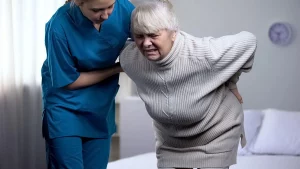 You can’t fight the statistic: approximately 1 in 8 women in the United States will be diagnosed with breast cancer. It’s the second most common kind of cancer among women (and also occurs in some men).
You can’t fight the statistic: approximately 1 in 8 women in the United States will be diagnosed with breast cancer. It’s the second most common kind of cancer among women (and also occurs in some men).
October is National Breast Cancer Awareness Month, and we should all be aware.
Mammogram It
You have a better chance of surviving breast cancer if it is detected early. That means regular mammograms. Any women between the ages of 40-49 should begin a dialogue with their doctor about when and how frequently that should get mammograms. Any women over the age of 50, should get a mammogram every 2 years.
If breast cancer runs in your family, you should start this conversation even earlier. It’s never too soon to have the talk. Don’t brush it off, or under the rug; it could save your life. One of the best tools is information.
Check for Lumps
Early breast cancer usually has no sign or symptom, but later as the cancer grows, it may cause a lump and the skin over the tumor may become course and wrinkled. Contrary to what you might assume, breast cancer is not usually painful.
Discharge from the nipple is also a sign of breast cancer.
Self Exam
You should receive a clinical breast exam every year. This usually happens during an annual visit with your gynocologist.
But a self-exam should be a part of your monthly routine. The more familiar you are with your own body, the more likely you will notice if something is amiss. Examine a few days after your period, as breasts are least likely to be sore or swollen. Ask your doctor for tips and what to look for.
Outlook
The outlook for breast cancer is better than ever, but preparedness and knowledge are instrumental to ensuring your good health.
-Arianna Schioldager

















